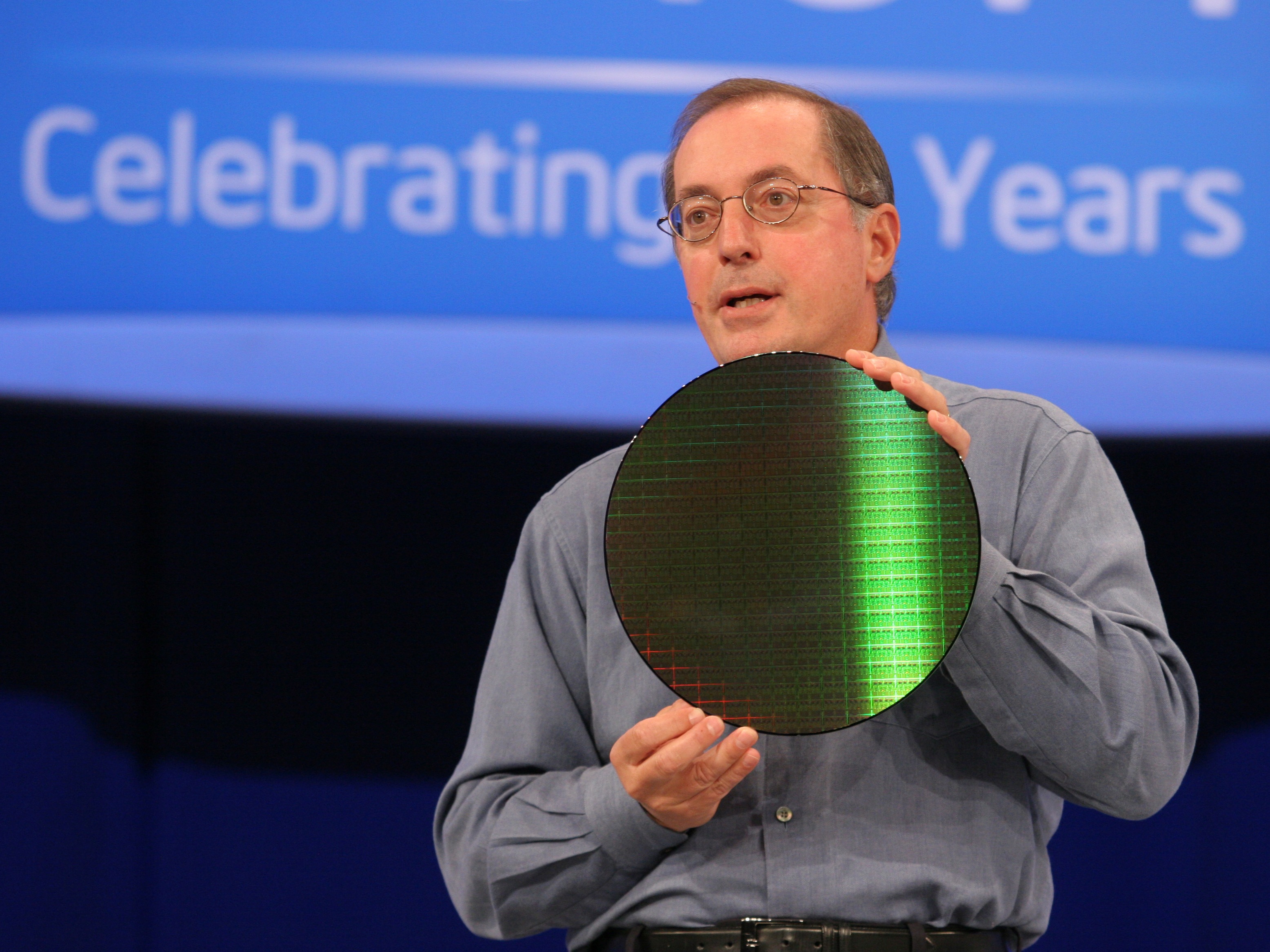IDF: Intel reveals eight-core PC processor

Flexing its muscles at the opening keynote at the IDF conference today, Intel revealed plans for an eight-core PC processor.
Intel's head honcho Paul Otellini revealed that the new chip, codenamed Nehalem, will boast not only eight cores but also the ability to compute two software threads per core.
8-core Nehalem chips
It's a feature similar to HyperThreading as found in Intel's long defunct Pentium 4 NetBurst CPUs and means Nehalem will pack no less than 16 logical cores.
As for physical configuration, the big news is that the eight-core Nehalem chip will be based on a single processor die. Intel's current quad-core chips, by contrast, are built using a pair of dual-core dies.
Otellini said the eight-core Nehalem processor will go on sale in 2009. However, dual and quad-core members of the new Nehalem processor family are also on the roadmap and will ship to customers before the end of 2008.
All Nehalem CPUs will be based on Intel's swanky new high-k 45nm chip manufacturing process. In quad-core trim Nehalem packs no less than 731m transistors.
As well as upping Intel's ante in terms of core counts, Nehalem will introduce a number of further new key technologies.
Sign up for breaking news, reviews, opinion, top tech deals, and more.
Intel's answer to AMD's Direct Connect CPU
The first is QuickPath, Intel's answer to AMD's Direct Connect CPU communications interface. Out goes Intel's existing discreet memory controller and antiquated unidirectional front side CPU bus. And in comes an integrated memory controller technology and improved, full duplex communication links between system components.
The increased bandwidth and reduced latency provided by QuickPath should allow improved multi-core performance scaling. Intel's existing dual and quad-core chips are less efficient, in that regard, than AMD's competing processors. The arrival of QuickPath will spell the end of the only remaining architectural advantage that AMD holds over Intel.
Closely related to the new QuickPath interface is Nehalem's modular architecture. According to Otellini, the new processor will be available in a wide range of configurations. As well as varying core counts and cache sizes, some models in the Nehalem family will also pack an integrated graphics core.
Here come the fireworks
At this stage you may be thinking much of this sounds familiar. Indeed, AMD's upcoming Fusion processors are based on an extremely similar modular philosophy. As ever, the two big noises of PC processor technology are mirroring each other's moves closely.
Finally, all Nehalem chips will boast multi-level cache memory, with both dedicated cache per core and a shared cache memory pool.
Otellini did not talk performance specifics or clock speeds for the Nehalem family. However, he did say the architecture benefited from a new execution core design that improved upon the already impressive Core 2 in terms of single-threaded performance.
Speaking to Tech.co.uk, an Intel engineer who wished to remain anonymous also said that while Nehalem retains the four-issue wide basic architecture of existing Core 2 chips, we can expect some serious fireworks when it arrives. If he's to be believed, prepare to experience a performance boost akin to that delivered by the first Core 2 processors compared with Intel's old Pentium 4 NetBurst chips.
Technology and cars. Increasingly the twain shall meet. Which is handy, because Jeremy (Twitter) is addicted to both. Long-time tech journalist, former editor of iCar magazine and incumbent car guru for T3 magazine, Jeremy reckons in-car technology is about to go thermonuclear. No, not exploding cars. That would be silly. And dangerous. But rather an explosive period of unprecedented innovation. Enjoy the ride.